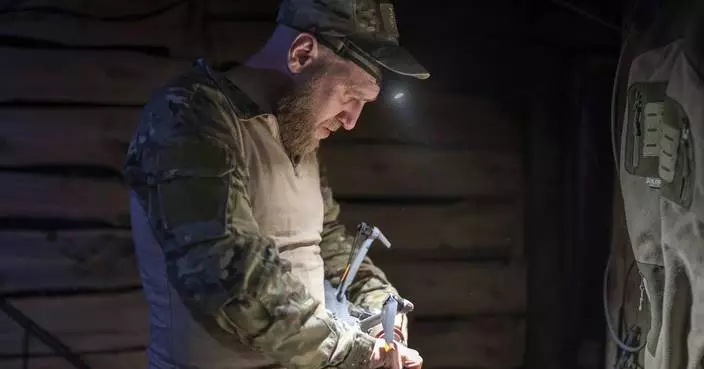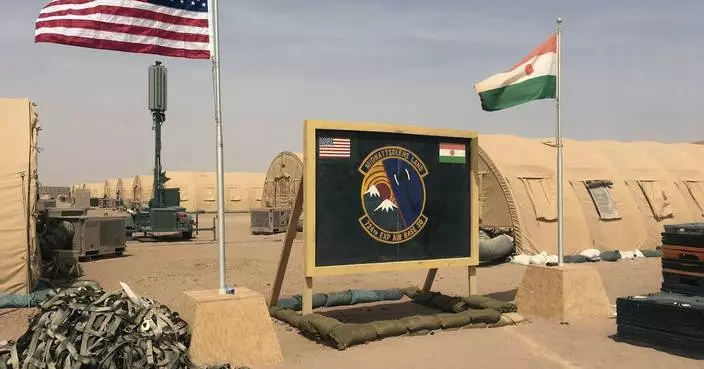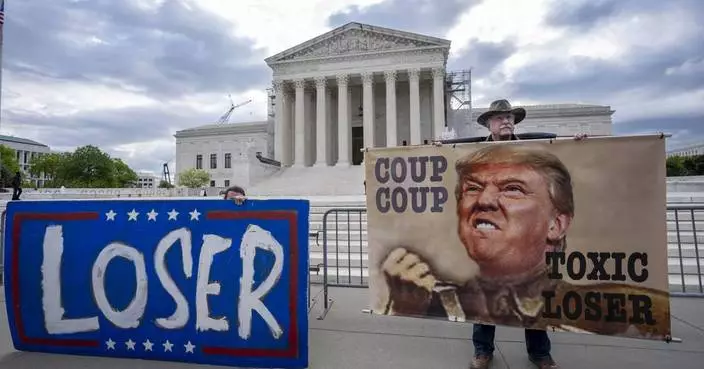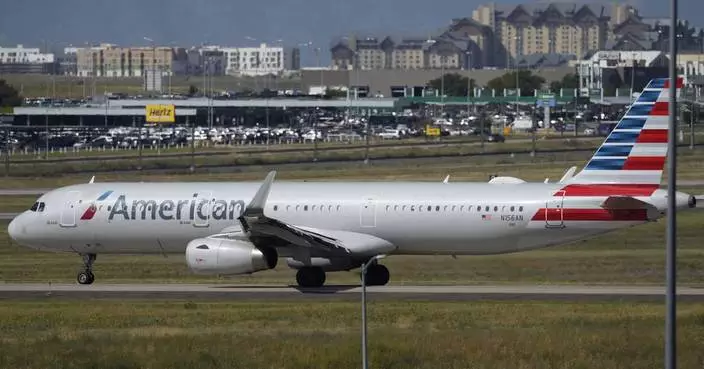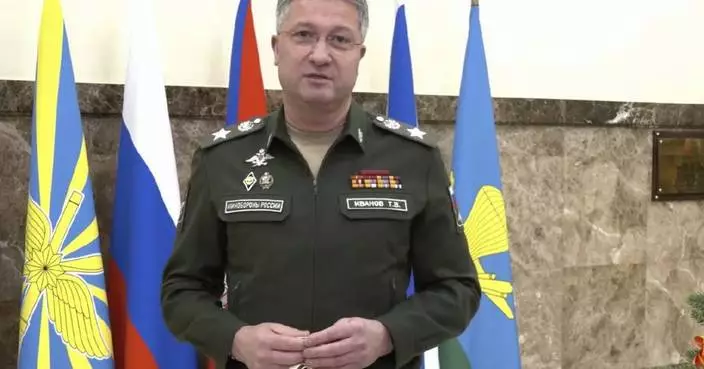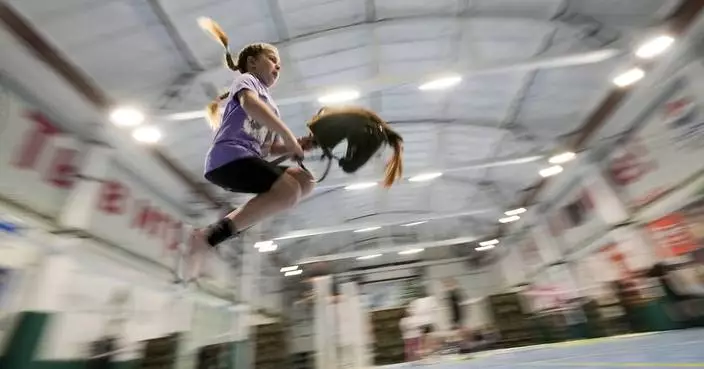The missile used to shoot down a Malaysia Airlines passenger jet over eastern Ukraine in 2014, killing all 298 aboard, belonged to a Russia-based military unit, an international team of investigators said Thursday after painstakingly studying video and photos of a military convoy.
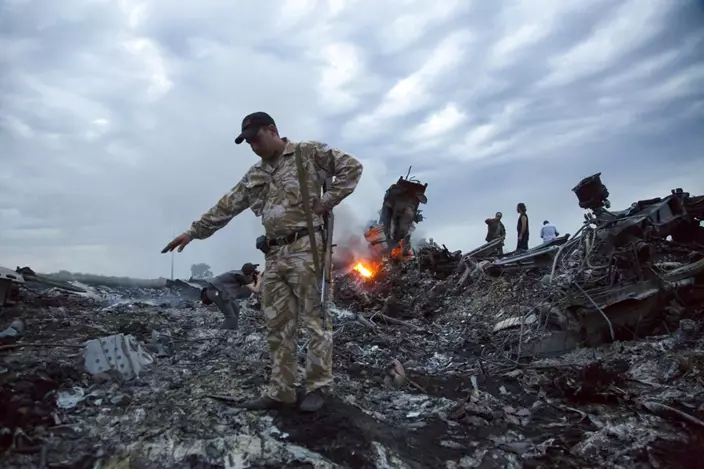
FILE - In this July 17, 2014. file photo, people walk amongst the debris at the crash site of a passenger plane near the village of Grabovo, Ukraine. An international team of investigators says that detailed analysis of video images has established that the Buk missile that brought down Malaysia Airlines Flight 17 nearly four years ago came from a Russia-based military unit. Wilbert Paulissen of the Dutch National Police said Thursday, May 24, 2018 that the missile was from the Russian military’s 53rd anti-aircraft missile brigade based in the Russian city of Kursk. (AP Photo/Dmitry Lovetsky, File)
The criminal investigation team "has concluded that the Buk Telar with which Flight MH17 was shot down is from the 53rd anti-aircraft missile brigade from Kursk in the Russian Federation," said Wilbert Paulissen, head of the Netherlands' National Crime Squad, referring to the missile system used.
It was the clearest link yet published by the investigators to the involvement of Russian military in the deadly surface-to-air missile strike on the Boeing 777, and it echoed findings published in 2016 by the Bellingcat investigative group.
Russia has always denied involvement in the downing of Flight 17, which was en route from Amsterdam to Kuala Lumpur, Malaysia, when it was blown out of the sky at 33,000 feet (about 10,000 meters) over war-ravaged eastern Ukraine on July 17, 2014.
Bodies, debris and burning wreckage were strewn over a field of sunflowers near the rebel-held village of Hrabove in the Donetsk region of eastern Ukraine, about 40 kilometers (25 miles) from the Russian border, where fighting had been raging for months.
On Thursday, Russia criticized the Joint Investigation Team, or JIT, for relying on claims by Bellingcat.
"If the international investigative team is indeed interested in tracking down the real culprits of the MH17 catastrophe, its members would better rely on facts and witness testimony and not fakes produced by Bellingcat and Ukraine's Security Service," the Russian Defense Ministry said in a statement.
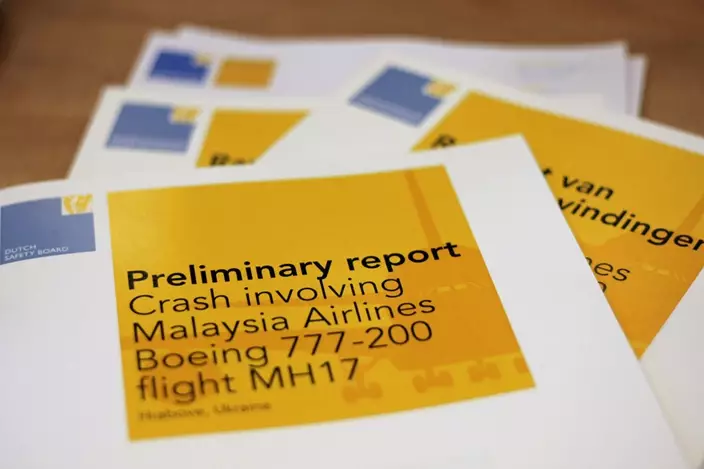
FILE - In this Tuesday, Sept 9, 2014 file photo, a stack of preliminary reports by the Dutch Safety Board on the crash of Malaysia Airlines flight MH17 is displayed at the board's headquarters in The Hague, Netherlands. An international team of investigators says that detailed analysis of video images has established that the Buk missile that brought down Malaysia Airlines Flight 17 nearly four years ago came from a Russia-based military unit. Wilbert Paulissen of the Dutch National Police said Thursday, May 24, 2018 that the missile was from the Russian military’s 53rd anti-aircraft missile brigade based in the Russian city of Kursk. (AP Photo/Mike Corder, File)
The Russian Foreign Ministry also criticized the investigators for allegedly ignoring evidence provided by Russia, including radar surveillance of the airspace at the time of the flight.
"In these circumstances, we have legitimate questions about the true underlying cause of the decision of the JIT to disclose the preliminary conclusion," the Foreign Ministry statement said.
Prosecutors said they have presented their findings to Moscow and are seeking answers, but so far have not received a response. The international team running the criminal investigation appealed for help from witnesses who can testify about the involvement of the Russian military's 53rd anti-aircraft missile brigade.
Prosecutor Fred Westerbeke said the new conclusion raised new questions, "such as the question about how actively involved the brigade itself was in bringing down Flight MH17."
Westerbeke said the JIT is not yet ready to identify suspects, but added: "I can say that we are now entering the ... last phase of the investigation."
Prosecutors said in 2016 that the plane was shot down by a Buk 9M38 missile fired from territory controlled by Russia-backed rebels, using a mobile launcher trucked in from Russia and hastily returned there.
Thursday's presentation went a step further by identifying the exact unit allegedly involved in the transport. It showed a compilation of video and photos from social media tracing the missile brigade convoy's journey in the weeks before the incident.

FILE - In this Monday, July 21, 2014 file photo, a sign reading: Respect for MH17, during a commemoration at Museum Square in Amsterdam. An international team of investigators says that detailed analysis of video images has established that the Buk missile that brought down Malaysia Airlines Flight 17 nearly four years ago came from a Russia-based military unit. Wilbert Paulissen of the Dutch National Police said Thursday, May 24, 2018 that the missile was from the Russian military’s 53rd anti-aircraft missile brigade based in the Russian city of Kursk. (AP Photo/Margriet Faber, File)
"All findings from this forensic investigation confirm the earlier conclusion of the JIT that Flight MH17 was shot down by 9M38 series missile," said Jennifer Hurst of the Australian Federal Police.
Investigators displayed parts of the engine casing and exhaust system of a Buk 9M38 series missile recovered from eastern Ukraine and showed photos of its serial number, which they said demonstrated it was made in Moscow.
However, investigators said they could not yet say with certainty that it was the exact missile used to down MH17. They appealed for witnesses to come forward with more information about the missile and the role of the Russian military in transporting it.
In a statement, Australian Foreign Minister Julie Bishop said: "That a sophisticated weapon belonging to the Russian Army was dispatched and used to shoot down a civilian aircraft should be of grave international concern. We are discussing these findings with our partners and considering our options."
Ultimately, any suspects identified and charged will be prosecuted in Dutch courts — if they can be arrested and brought to trial.
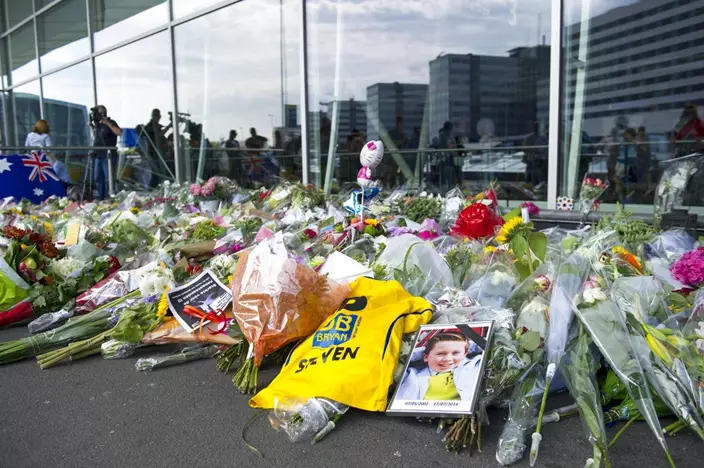
FILE - In this Sunday, July 20, 2014 file photo, a photo of Steven Noreilde from Brasschaat, Belgium, a victim of flight MH17, lays next to a soccer shirt surrounded by flowers, at Schiphol airport in Amsterdam. An international team of investigators says that detailed analysis of video images has established that the Buk missile that brought down Malaysia Airlines Flight 17 nearly four years ago came from a Russia-based military unit. Wilbert Paulissen of the Dutch National Police said Thursday, May 24, 2018 that the missile was from the Russian military’s 53rd anti-aircraft missile brigade based in the Russian city of Kursk. (AP Photo/Patrick Post, File)
Of the 298 people killed, 196 were Dutch, 42 were Malaysian and 27 were Australian.
Ukrainian President Petro Poroshenko said in a Facebook post that he would "do everything possible to ensure that the actions of the Russian Federation as a state which supports terrorism get an appropriate assessment" in the International Court of Justice.
Dutch Prime Minister Mark Rutte cut short a visit to India so he could chair a Cabinet meeting to discuss the findings.
Piet Ploeg, a member of a foundation for victims' relatives, said the Dutch government should not consider legal steps against Russia.
Belgian Foreign Minister Didier Reynders urged all countries to cooperate fully with the investigation "so that those responsible can be brought to justice."
AUGUSTA, Maine (AP) — An Army reservist and friend of the gunman behind Maine’s deadliest mass shooting testified Thursday about his friend's mental decline, describing publicly for the first time the warning he issued a month before the tragedy unfolded.
Sean Hodgson texted leaders of his reserve unit six weeks before the shooting that left 18 people dead and 13 wounded, telling them to change the passcode to the gate at their Army Reserve training facility and arm themselves if Robert Card showed up.
Hodgson told a panel investigating the mass shooting on Thursday that he issued the warning to superiors after Card’s delusional and violent behavior spiraled and ended with Card punching him in the face.
“I said ‘Just so you know, I love you. I’ll always be there for you. I won’t give up on you.’ He had that blank stare on his face. It was a dead stare and he drove away,” Hodgson recounted as his friend left him at a gas station.
The attacks happened six months ago on Oct. 25 when Card opened fire at a bowling alley and a bar in Lewiston, two locations where he held a delusional belief that people were talking about him behind his back. Two days later, the 40-year-old Reservist was found dead of a self-inflicted gunshot wound.
Hodgson told superiors on Sept. 15: “I believe he’s going to snap and do a mass shooting.”
But it wasn't just Hodgson who was worried about Card. Several other reservists witnessed his deterioration during training last summer. That led to a two-week hospitalization in July for Card, months after relatives warned police he had grown paranoid and that they were concerned about his access to guns.
The failure of authorities to remove Card’s weapons in the weeks before the shooting has become the subject of a monthslong investigation in the state, which also has passed new gun safety laws since the tragedy.
In an interim report released last month, an independent commission launched by Gov. Janet Mills concluded that the Sagadahoc County sheriff’s office had probable cause under Maine’s “yellow flag” law to take Card into custody and seize his guns. It also criticized police for not following up with Hodgson about his warning text. A final report is expected this summer.
On Thursday, Hodgson said he warned of a mass shooting because Card threatened multiple members of the unit with violence and that his threats and delusions were escalating. And he had access to guns.
“The way he was behaving was very threatening. It was escalating. The totality of the circumstances, the events leading to that moment, I was pretty convinced he was going to cause harm,” he said.
Another reservist, Daryl Reed, testified he witnessed Card’s mental and physical decline firsthand, seeing a “normal guy” who successfully traded stocks and loved hunting and the outdoors become increasingly paranoid and believing others were calling him a pedophile.
Card also acquired a thermal scope with a laser range finder that he said cost $10,000, and he demonstrated how it could be used to detect animals, including at night, Reed said.
He added fellow reservists started to become concerned Card could become a danger to colleagues. They were surprised, several testified, when Card was released from a psychiatric hospital after only two weeks.
In an exclusive series of interviews in January, Hodgson told The Associated Press he met Card in the Army Reserve in 2006 and that they became close friends after both divorced their spouses around the same time. They lived together for about a month in 2022, and when Card was hospitalized in New York in July, Hodgson drove him back to Maine.
Growing increasingly worried about his friend’s mental health, Hodgson warned authorities after Card started “flipping out” after a night of gambling, pounding the steering wheel and nearly crashing multiple times. After ignoring his pleas to pull over, Card punched him in the face, Hodgson said.
“It took me a lot to report somebody I love,” he said. “But when the hair starts standing up on the back of your neck, you have to listen.”
Some officials downplayed Hodgson’s warning, suggesting he might have been drunk because of the late hour of his text. Army Reserve Capt. Jeremy Reamer, the commanding officer of the reserve unit, described him as “not the most credible of our soldiers” and said his message should be taken “with a grain of salt.”
Hodgson said he struggles with post-traumatic stress disorder and alcohol addiction but said he wasn’t drinking that night and was awake because he works nights and was waiting for his boss to call. “I grieve every day for the many lives that are lost for no reason and those that are still affected today,” he told the AP earlier this month.
Cara Cookson, director of victim services for the Maine Office of the Attorney General, also testified Thursday and described through tears the daunting task of responding to the enormity of the tragedy with a “patchwork of resources.”
On Thursday evening, the Maine Resiliency Center, which provides support to people affected by the killings, held a six-month commemoration event that drew several hundred people to a park in Lewiston.
The names of the 18 people who died were read aloud at the start of the ceremony, and there were 18 empty chairs, each with a candle and a blue heart, honoring the victims.
The governor also acknowledged the anniversary. “Our hearts are still healing, and the road to healing is long, but we will continue to walk it together,” Mills said in a statement.
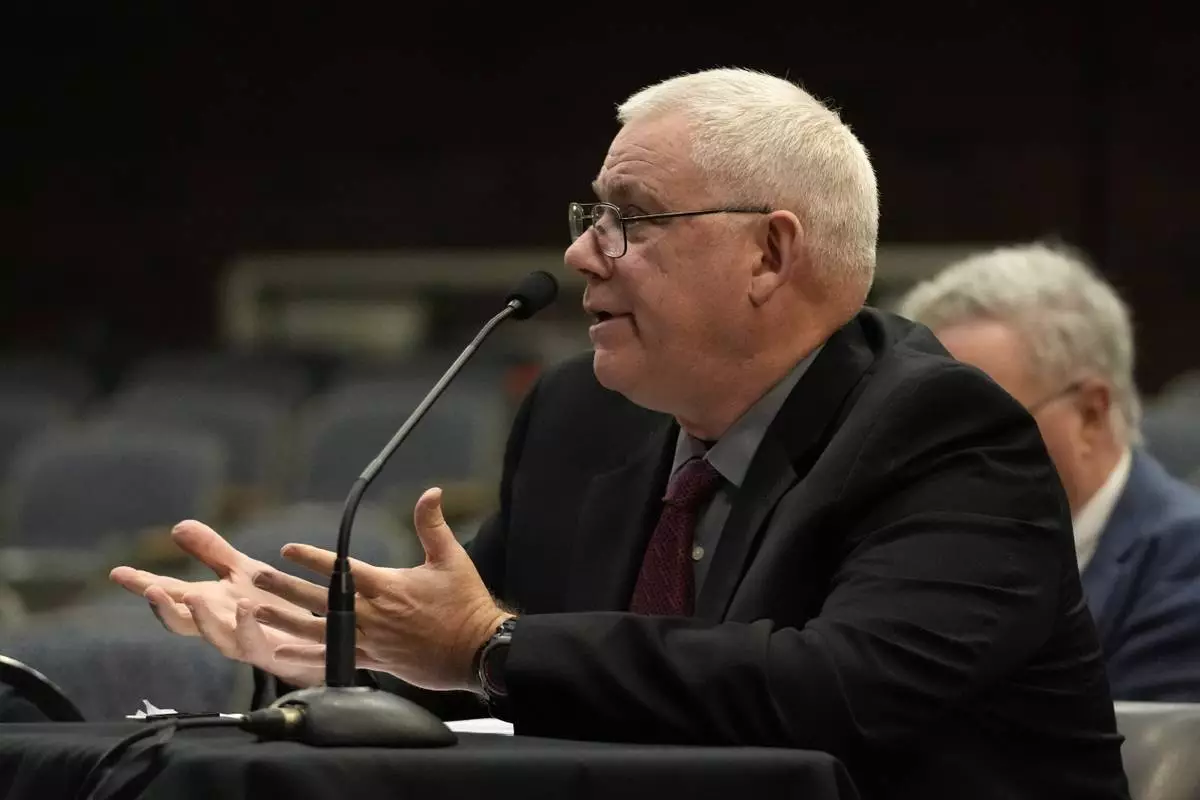
Ed Yurek, a member of the U.S. Army Reserve, gives testimony, Thursday, April 25, 2024, in Augusta, Maine, during a hearing of the independent commission investigating the law enforcement response to the mass shooting in Lewiston, Maine. (AP Photo/Robert F. Bukaty)
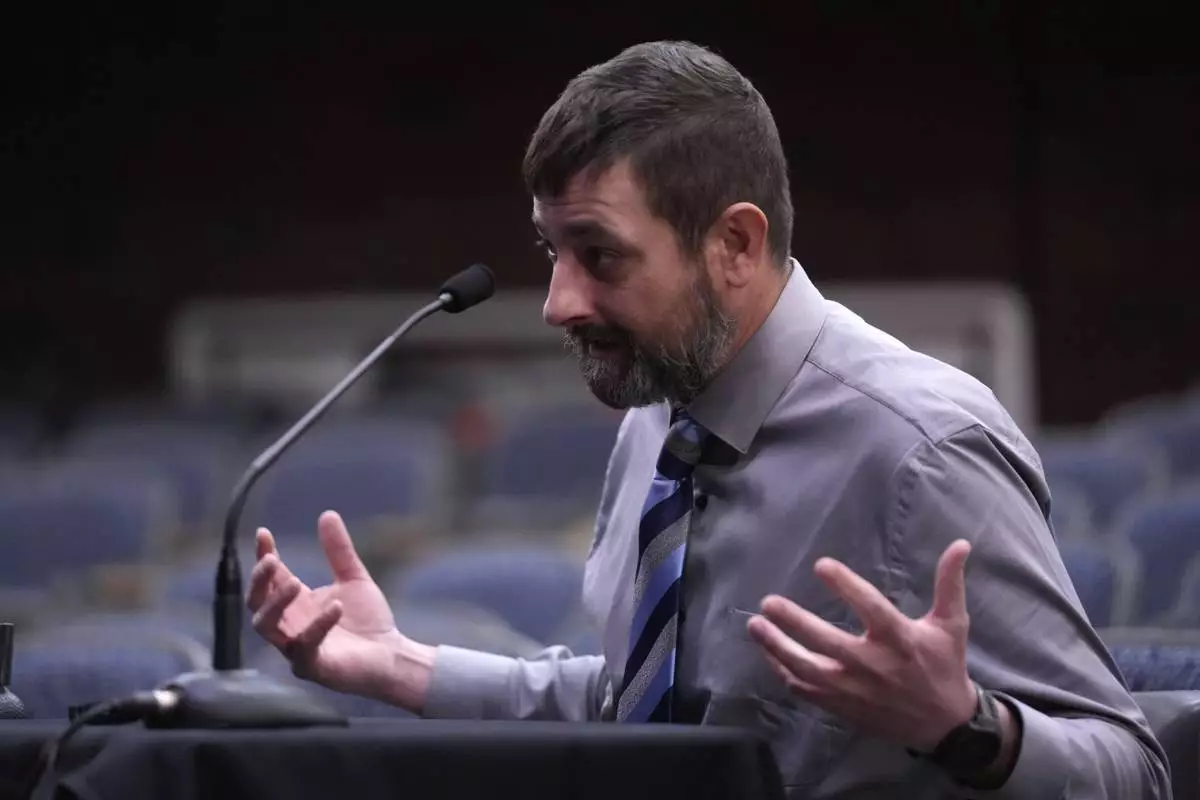
Sean Hodgson, a member of the U.S. Army Reserve, gives testimony, Thursday, April 25, 2024, in Augusta, Maine, during a hearing of the independent commission investigating the law enforcement response to the mass shooting in Lewiston, Maine. (AP Photo/Robert F. Bukaty)
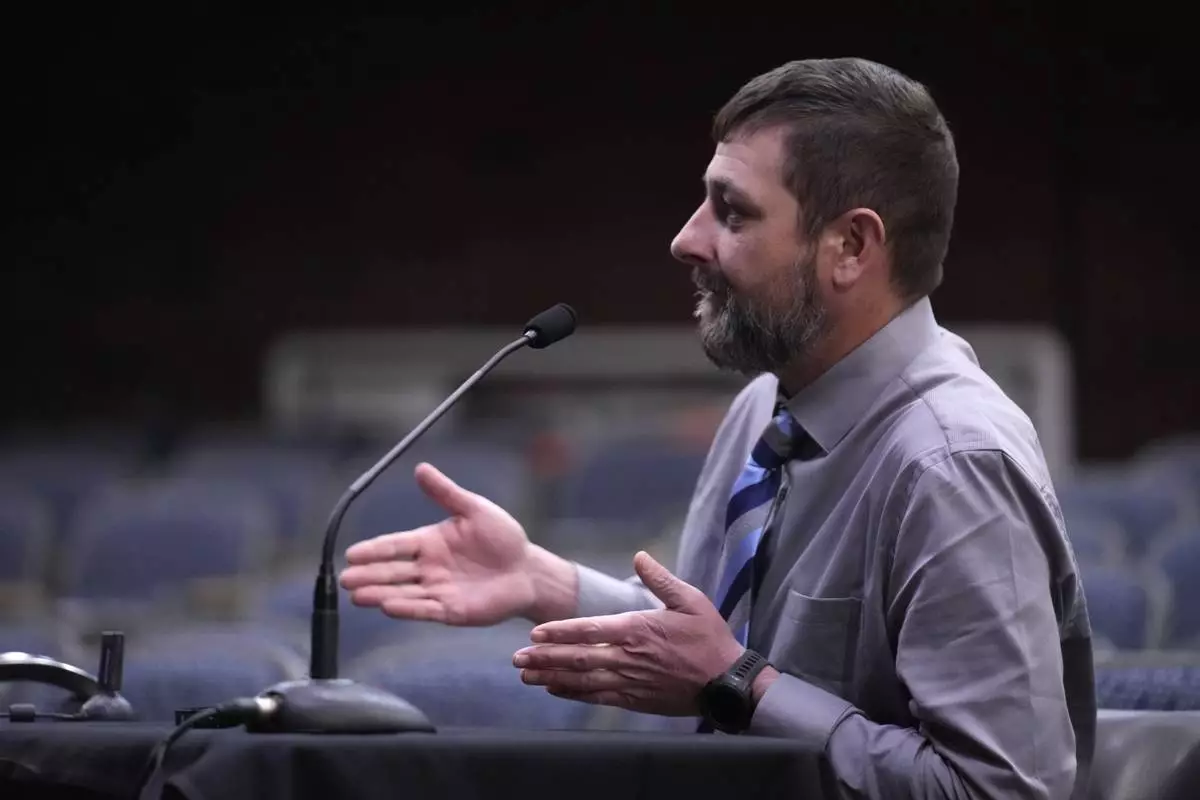
Sean Hodgson, a member of the U.S. Army Reserve, gives testimony, Thursday, April 25, 2024, in Augusta, Maine, during a hearing of the independent commission investigating the law enforcement response to the mass shooting in Lewiston, Maine. (AP Photo/Robert F. Bukaty)
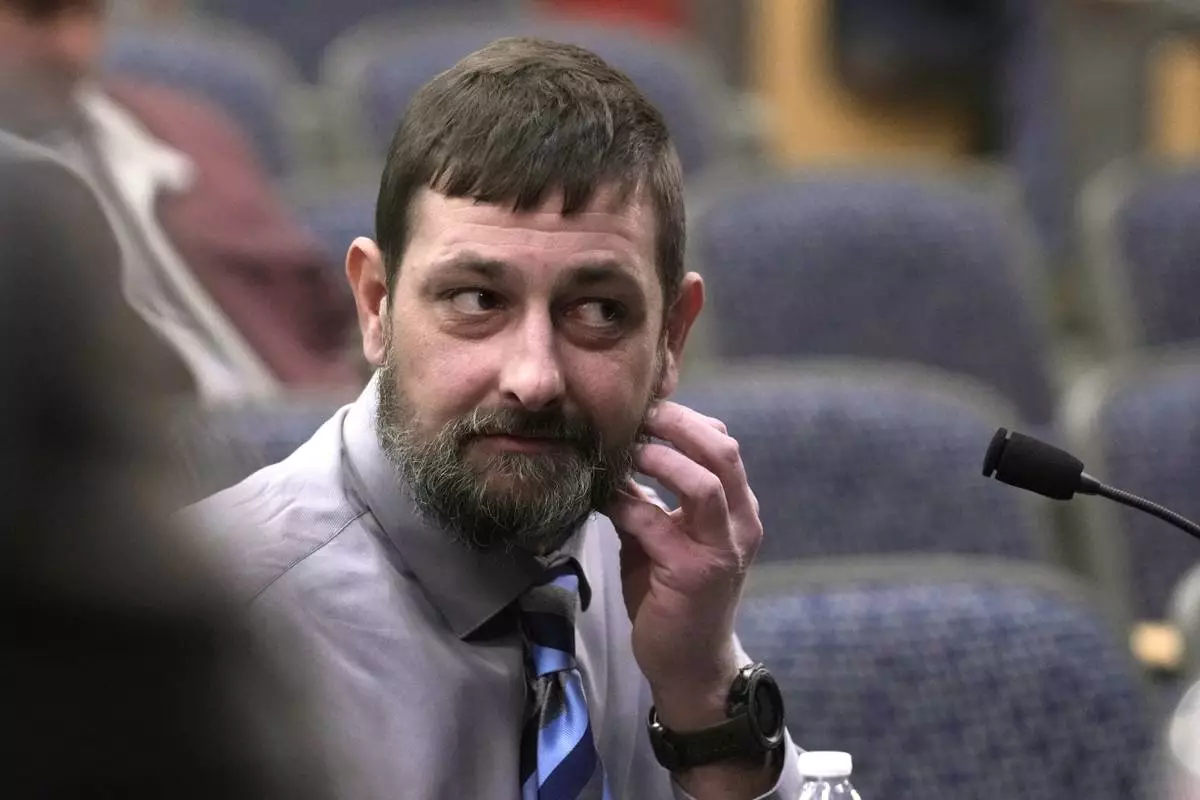
Sean Hodgson, a member of the U.S. Army Reserve, shows where he was punched by Robert Card while giving testimony, Thursday, April 25, 2024, in Augusta, Maine, during a hearing of the independent commission investigating the law enforcement response to the mass shooting in Lewiston, Maine. (AP Photo/Robert F. Bukaty)

Daniel Wathen listens to testimony, Thursday, April 25, 2024, in Augusta, Maine, during a hearing of the independent commission investigating the law enforcement response to the mass shooting in Lewiston, Maine. (AP Photo/Robert F. Bukaty)
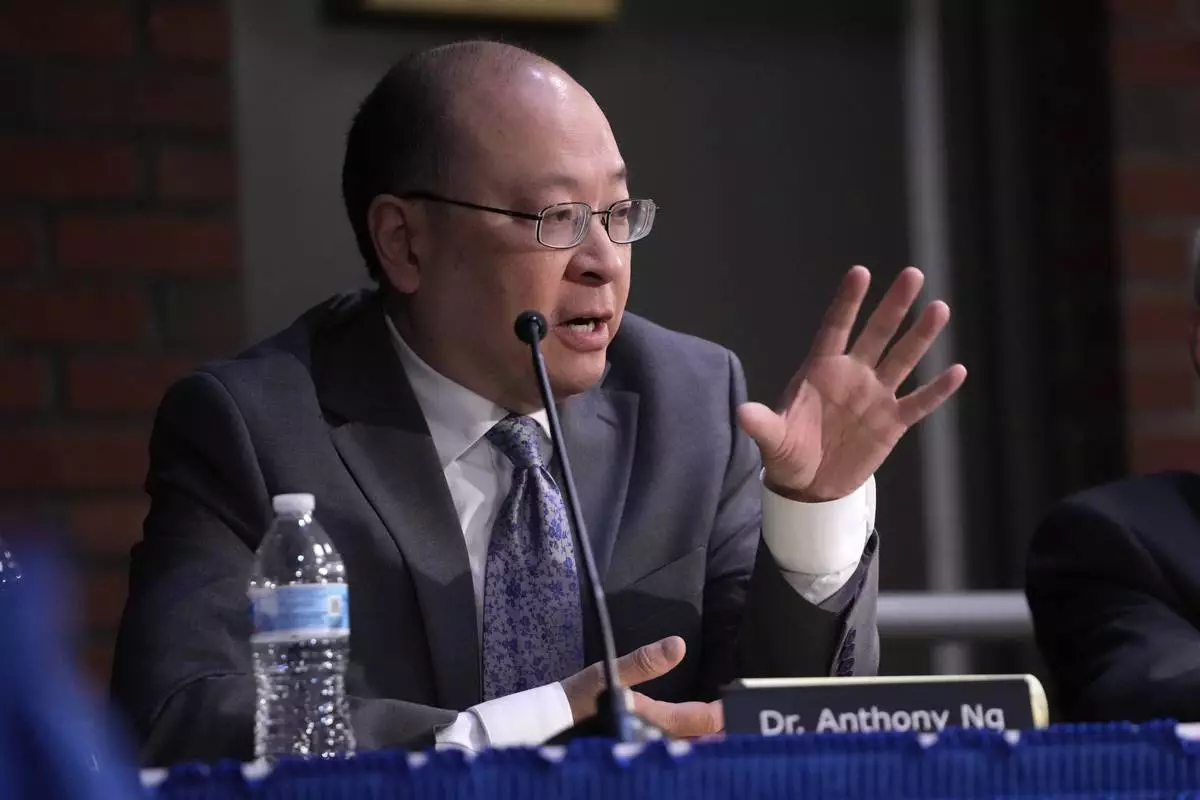
Dr. Anthony Ng questions a witness, Thursday, April 25, 2024, in Augusta, Maine, during a hearing of the independent commission investigating the law enforcement response to the mass shooting in Lewiston, Maine. (AP Photo/Robert F. Bukaty)
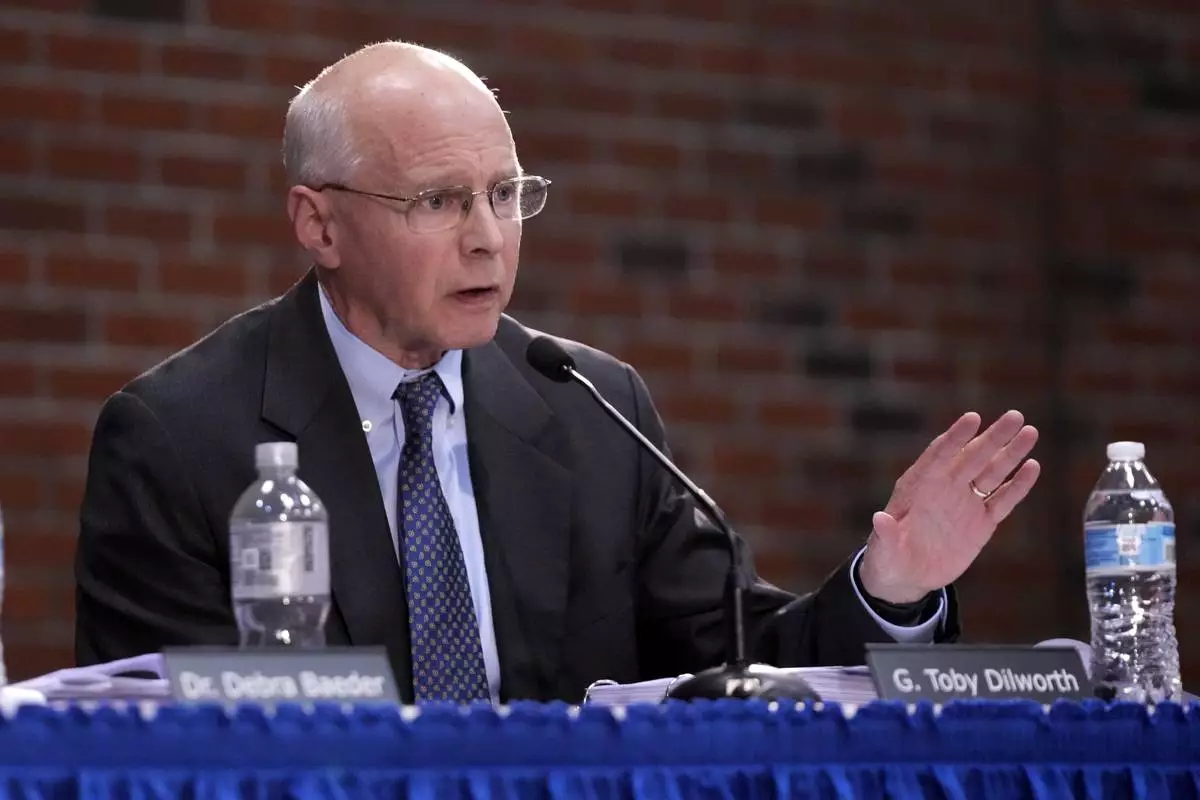
Toby Dilworth questions a witness, Thursday, April 25, 2024, in Augusta, Maine, during a hearing of the independent commission investigating the law enforcement response to the mass shooting in Lewiston, Maine. (AP Photo/Robert F. Bukaty)
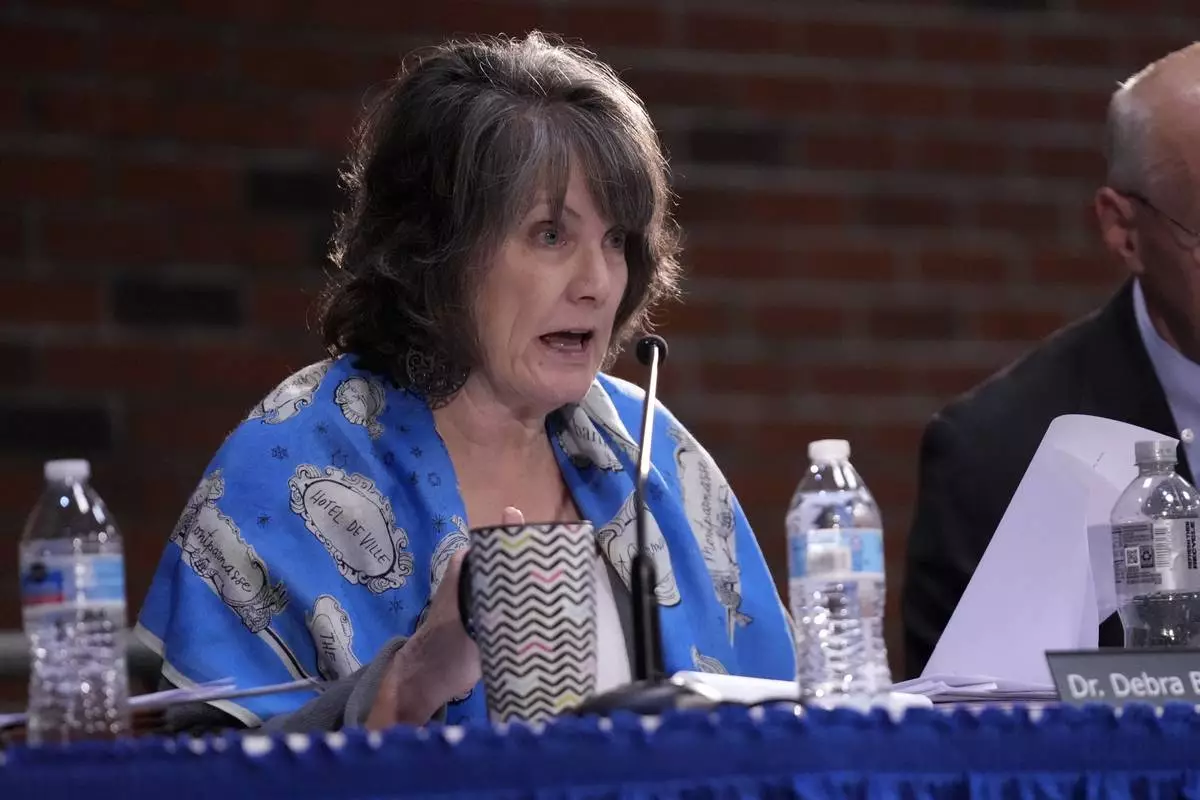
Dr. Debra Baeder questions a witness, Thursday, April 25, 2024, in Augusta, Maine, during a hearing of the independent commission investigating the law enforcement response to the mass shooting in Lewiston, Maine. (AP Photo/Robert F. Bukaty)

Ellen Gorman questions a witness, Thursday, April 25, 2024, in Augusta, Maine, during a hearing of the independent commission investigating the law enforcement response to the mass shooting in Lewiston, Maine. (AP Photo/Robert F. Bukaty)
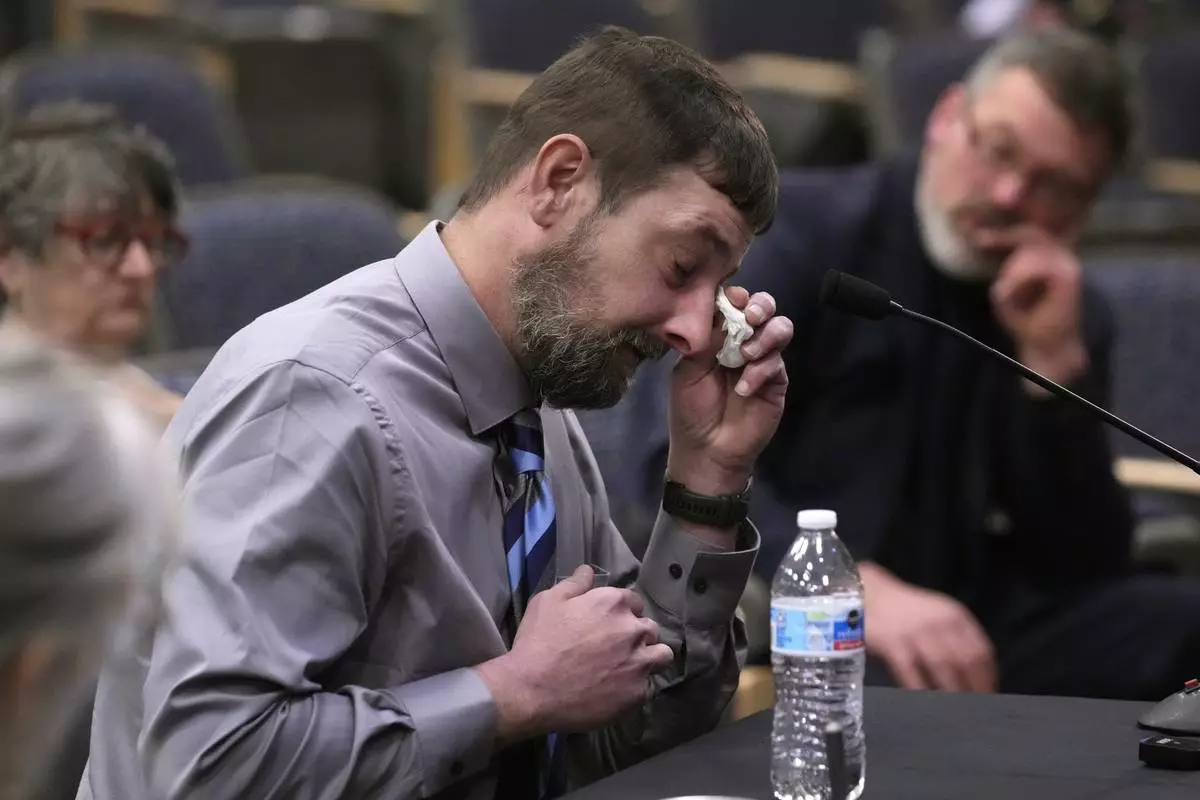
Sean Hodgson, a member of the U.S. Army Reserve, wipes tears while recalling the moment he heard about the mass shooting, Thursday, April 25, 2024, in Augusta, Maine, during a hearing of the independent commission investigating the law enforcement response to the mass shooting in Lewiston, Maine. (AP Photo/Robert F. Bukaty)
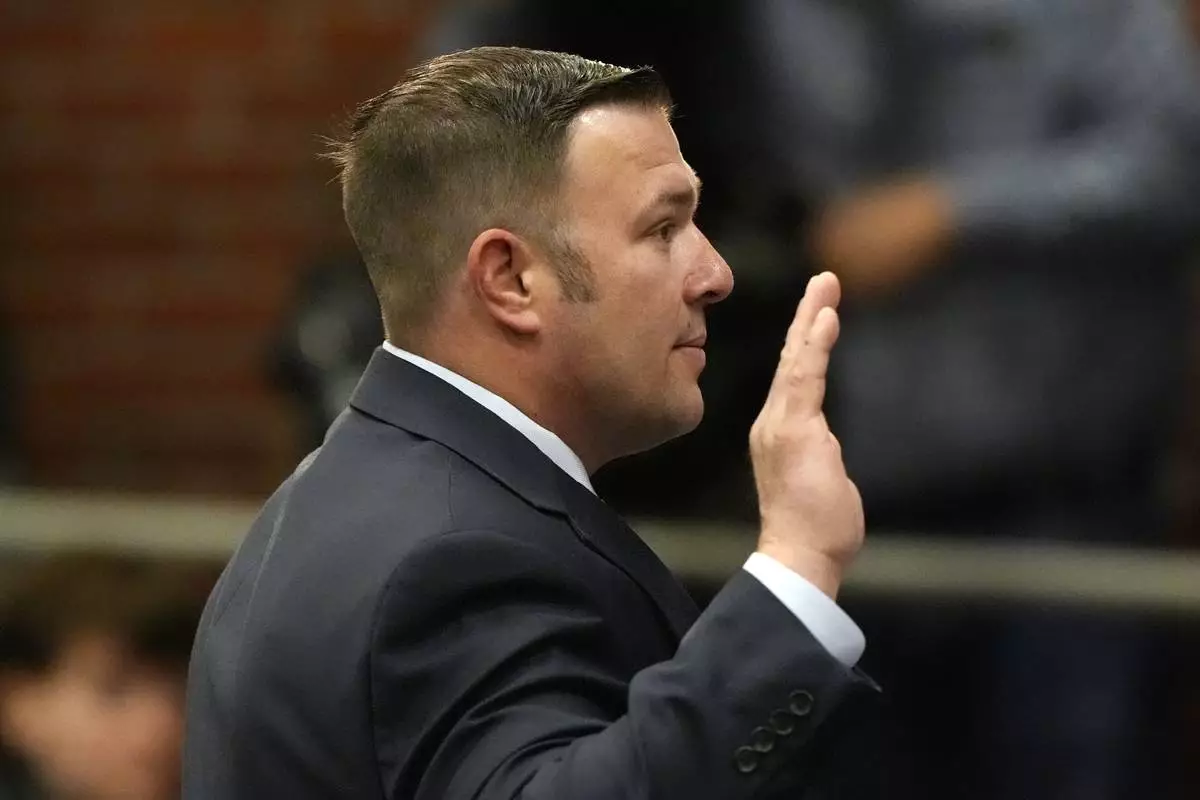
Daryl Reed, a member of the U.S. Army Reserves, is sworn in before giving testimony Thursday, April 25, 2024, in Augusta, Maine, during a hearing of the independent commission investigating the law enforcement response to the mass shooting in Lewiston, Maine. (AP Photo/Robert F. Bukaty)
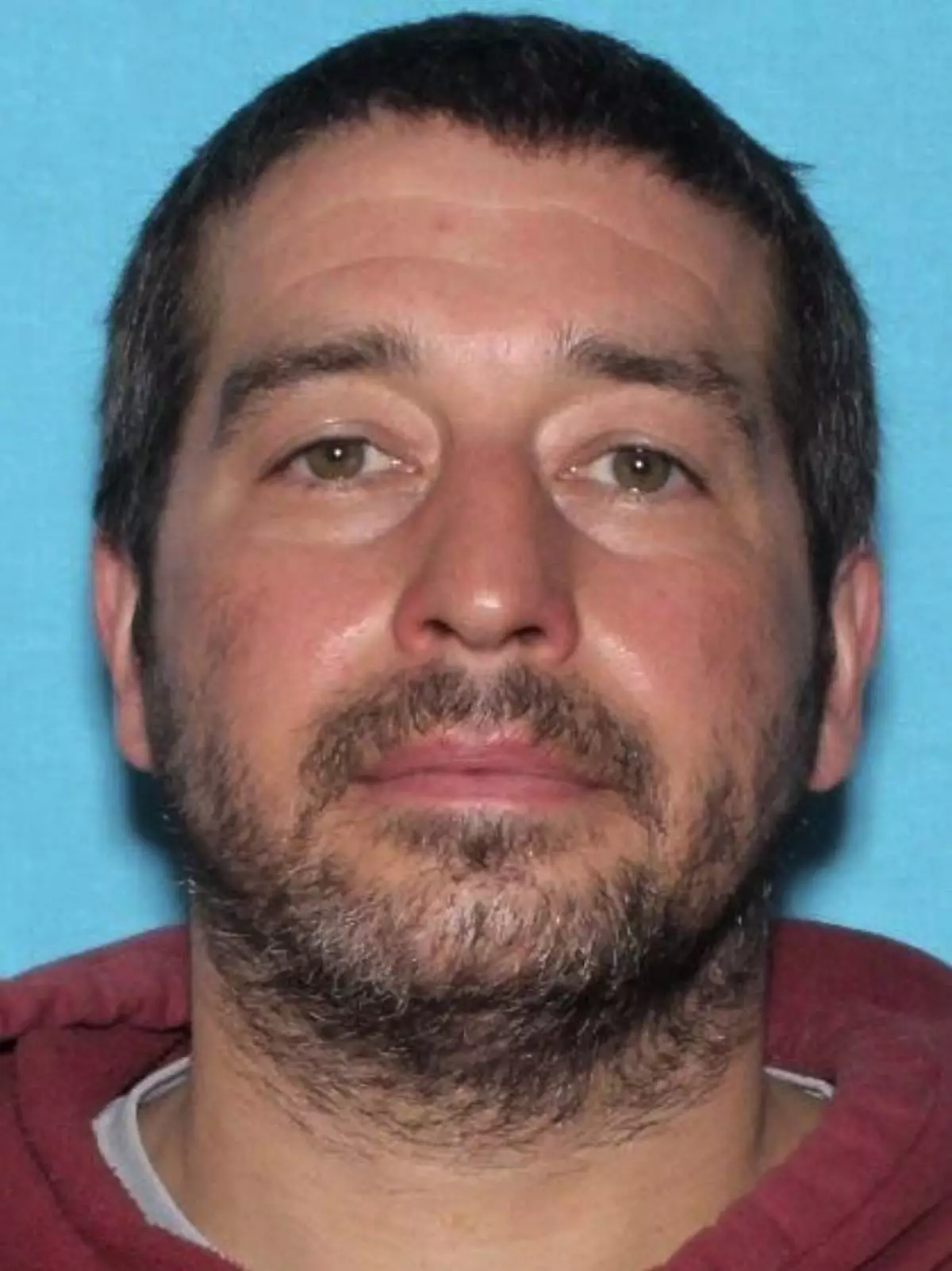
FILE - This photo released by the Lewiston, Maine, Police Department shows Robert Card, who was responsible for the mass shootings in Lewiston, Maine, on Oct. 25, 2023. Sean Hodgson, a fellow U.S. Army reservist who sounded the clearest warning ahead of Maine’s deadliest mass shooting, is expected to answer questions Thursday, April 25, 2024, from the commission investigating the tragedy. (Lewiston Police Department via AP, File)
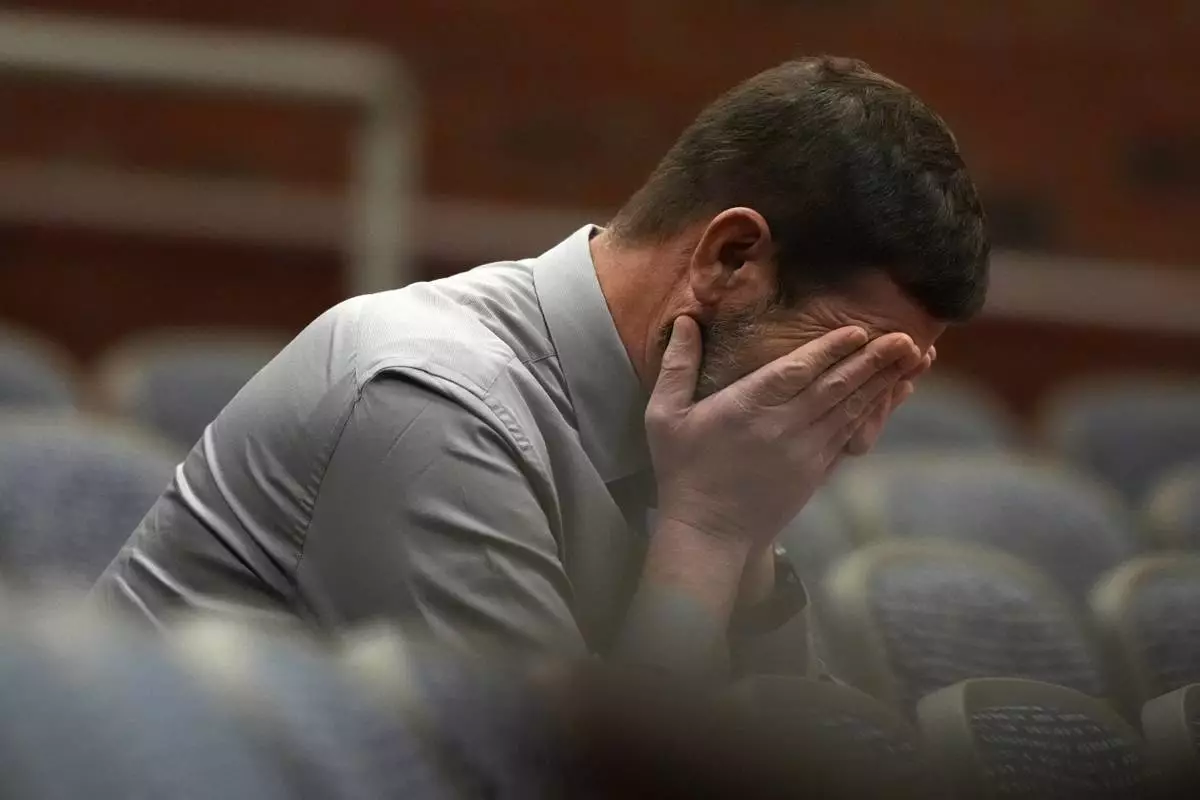
Sean Hodgson waits to be called to give testimony, Thursday, April 25, 2024, in Augusta, Maine, during a hearing of the independent commission investigating the law enforcement response to the mass shooting in Lewiston, Maine. Hodgson had alerted an Army supervisor in September that his friend, Robert Card, was capable to doing a mass shooting. (AP Photo/Robert F. Bukaty)




















